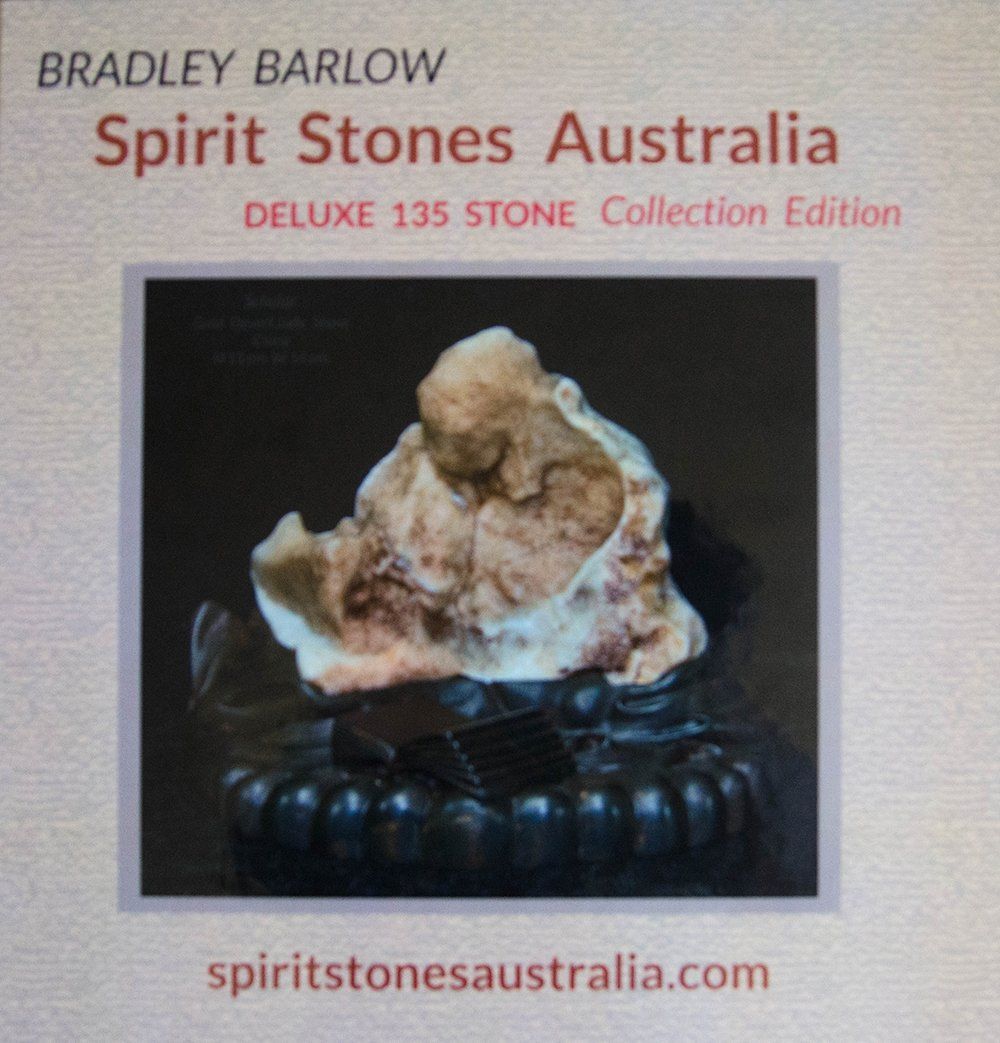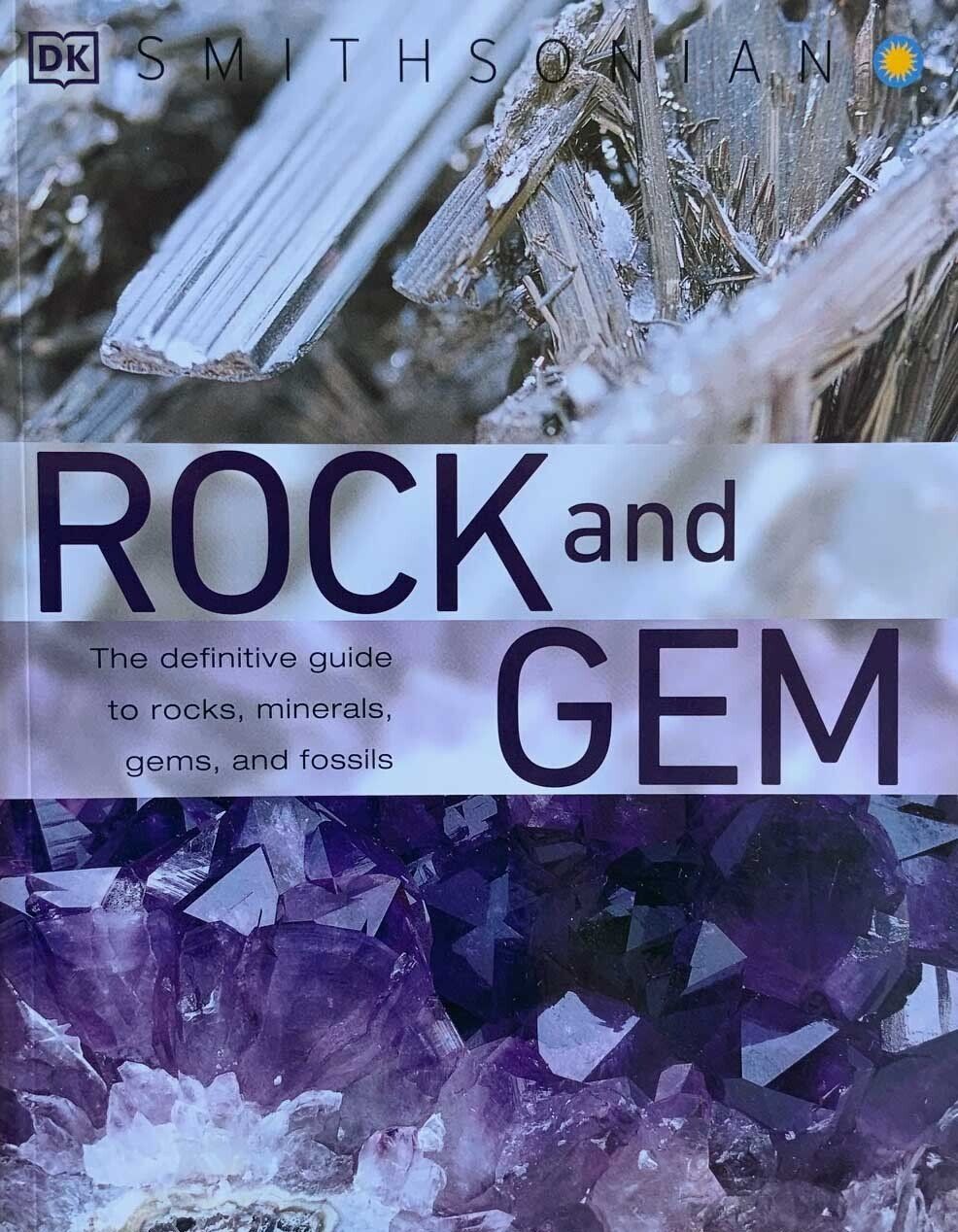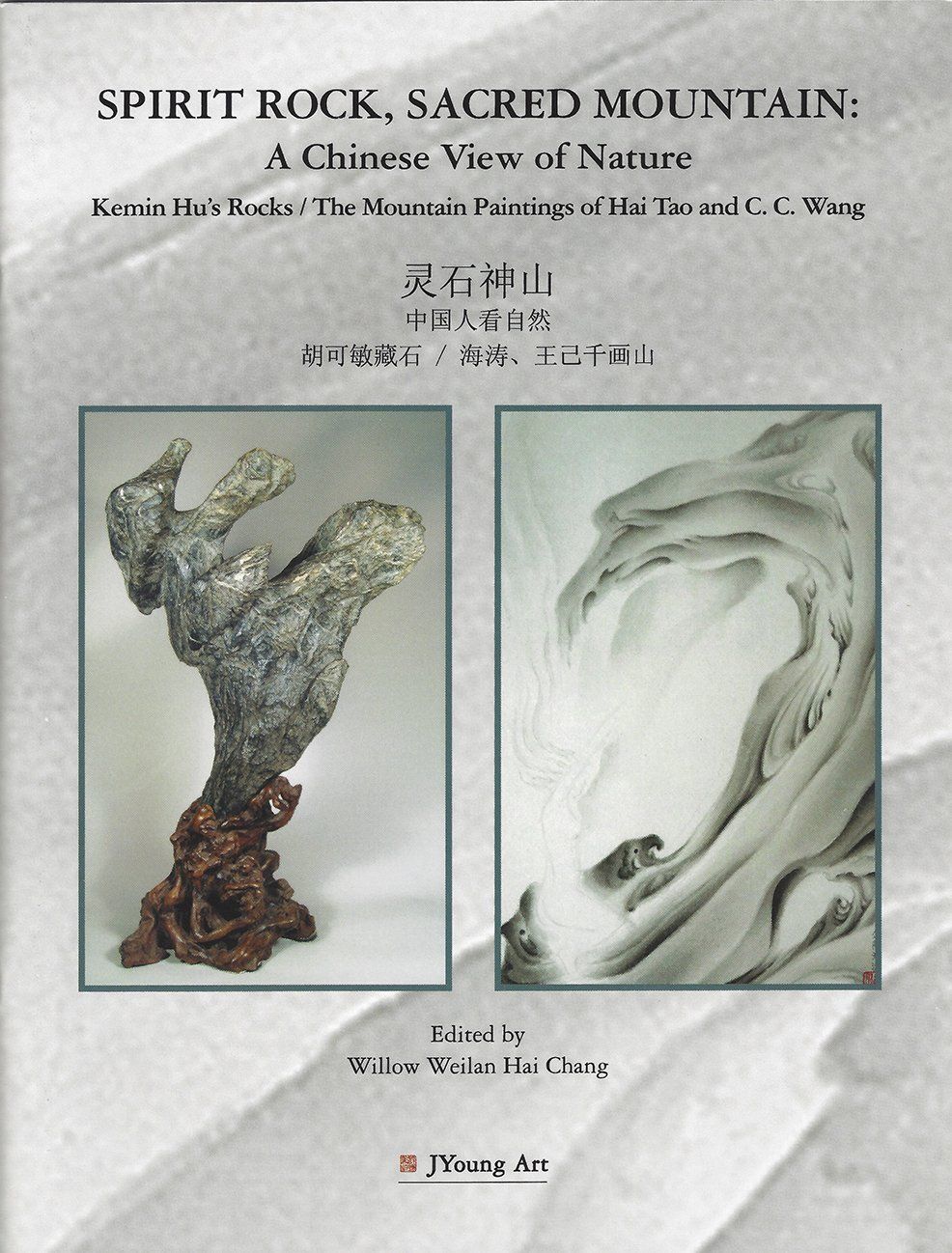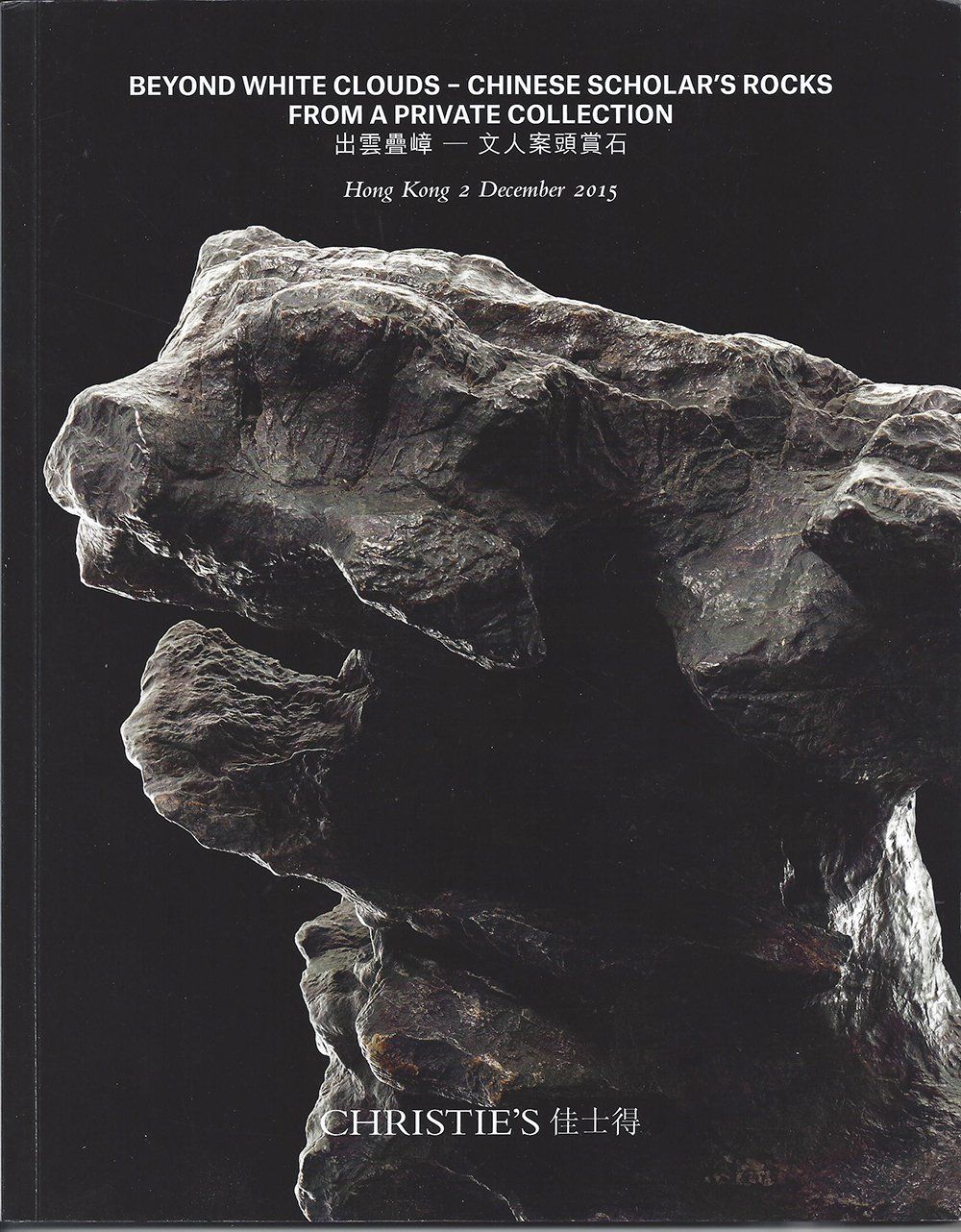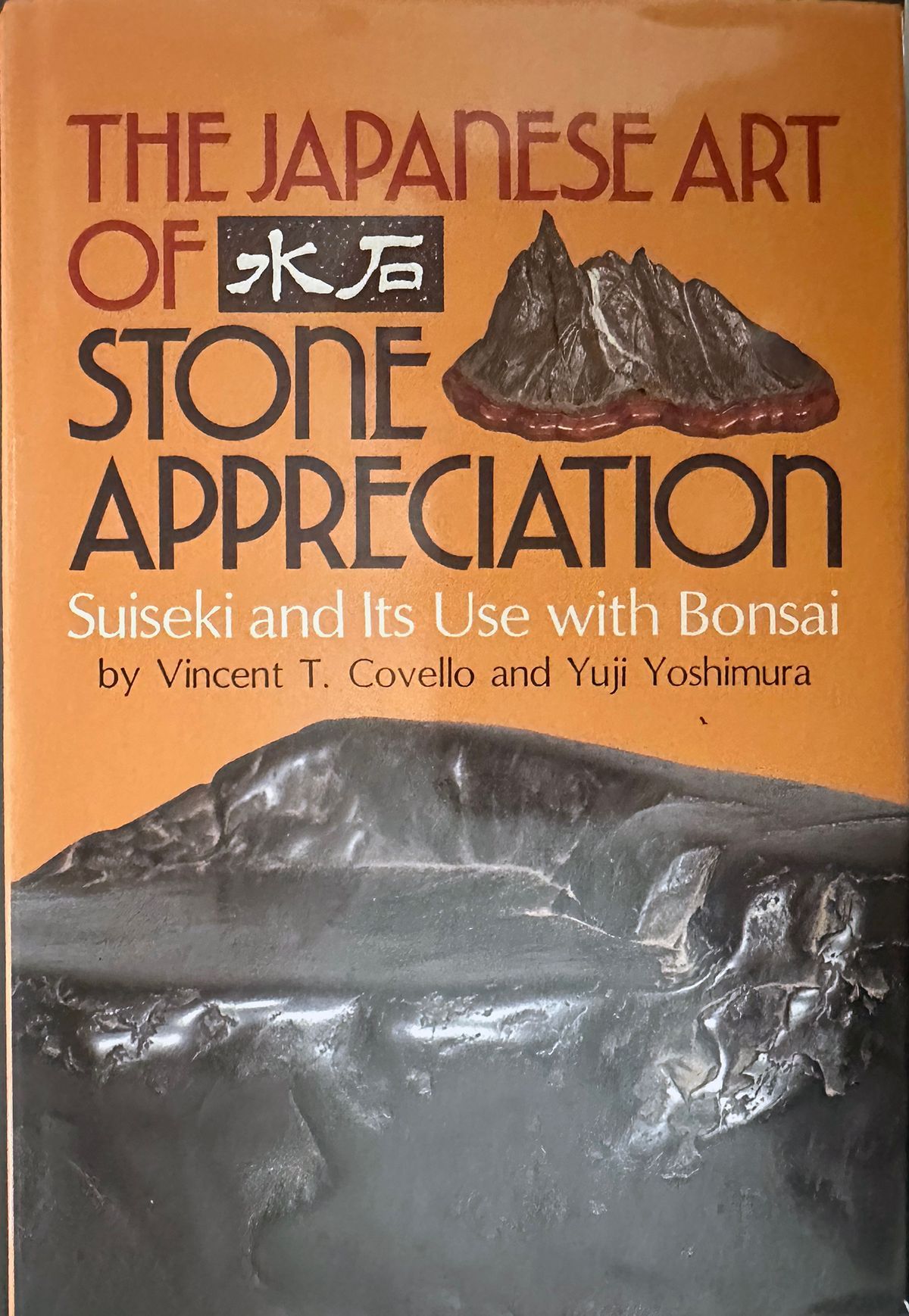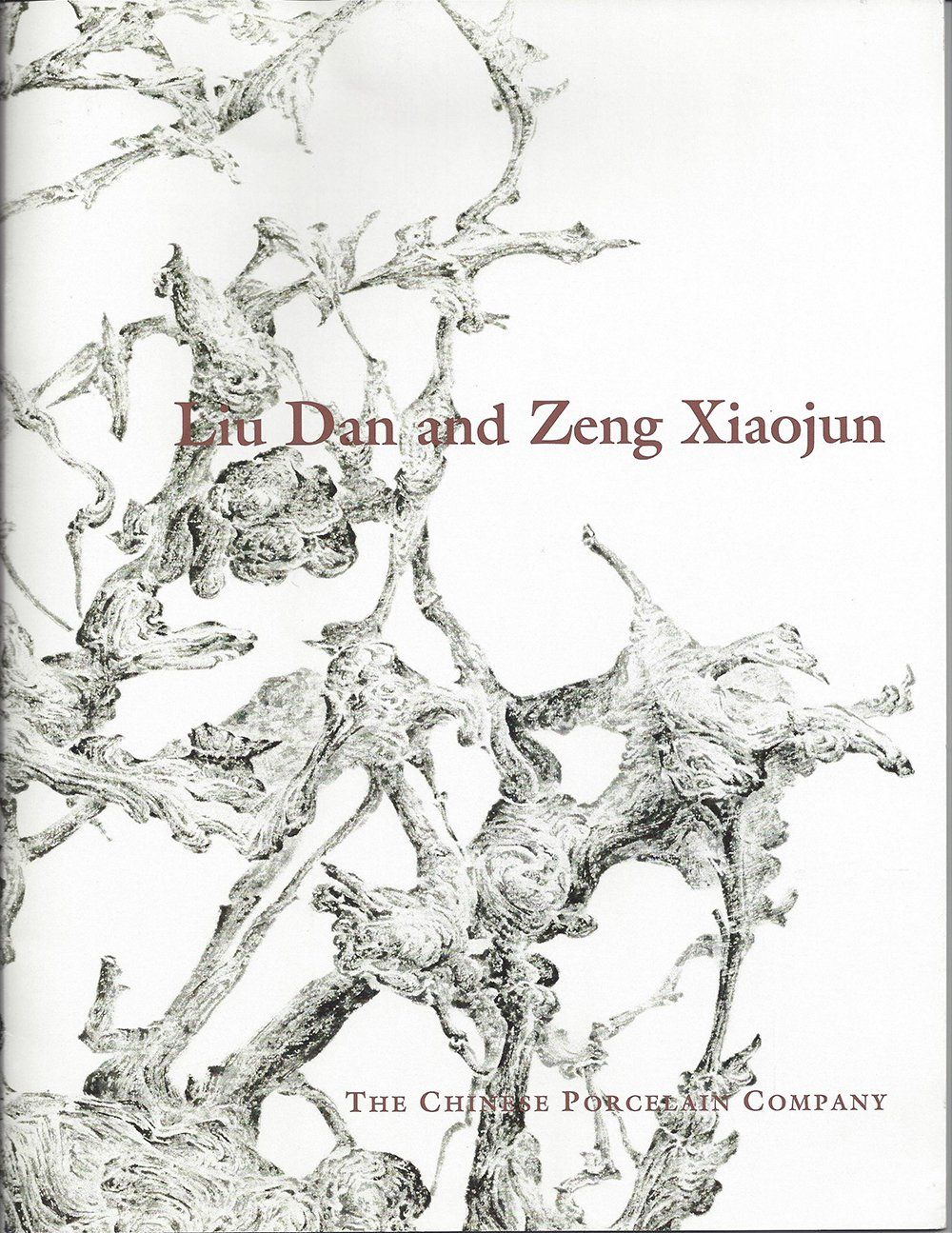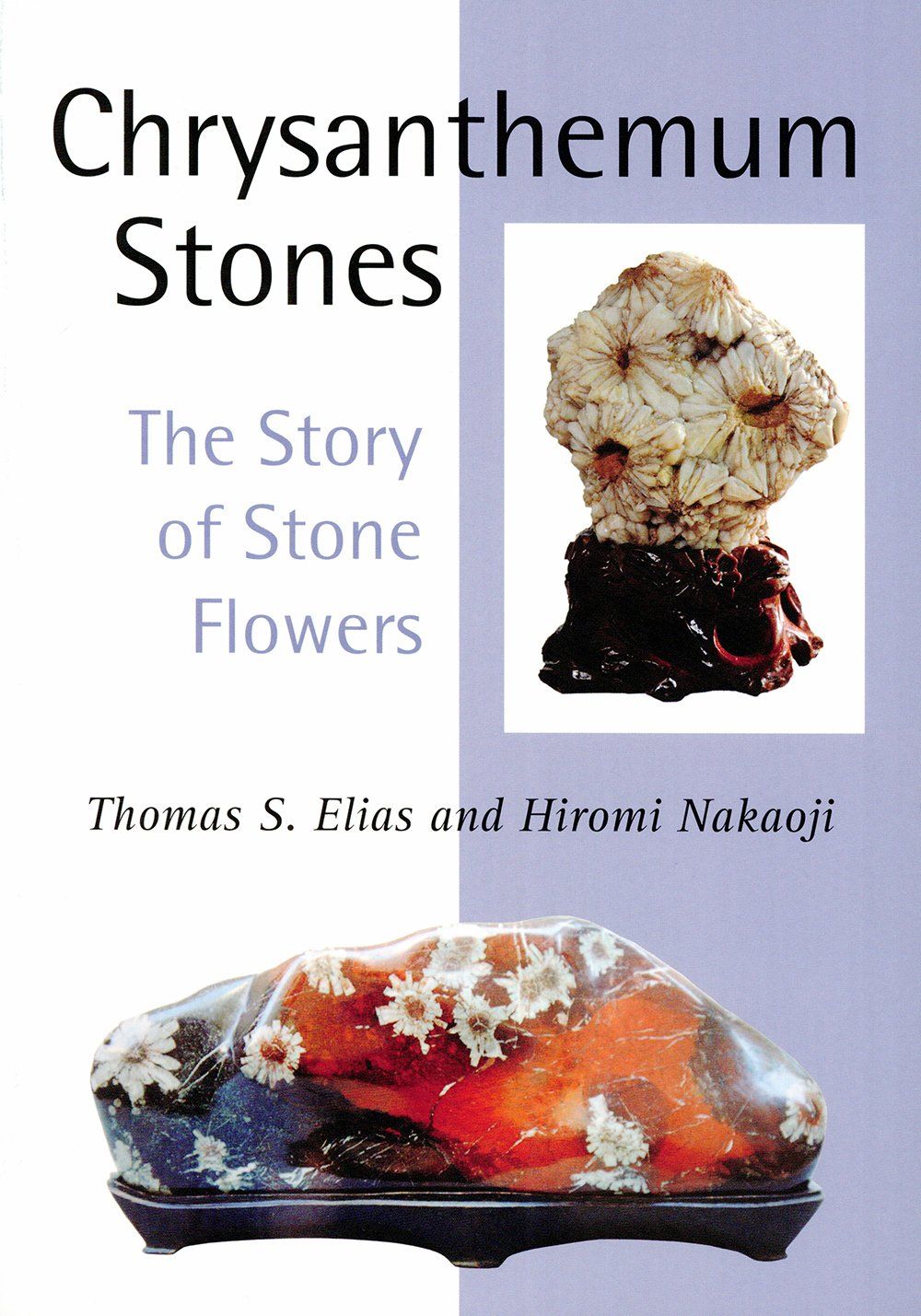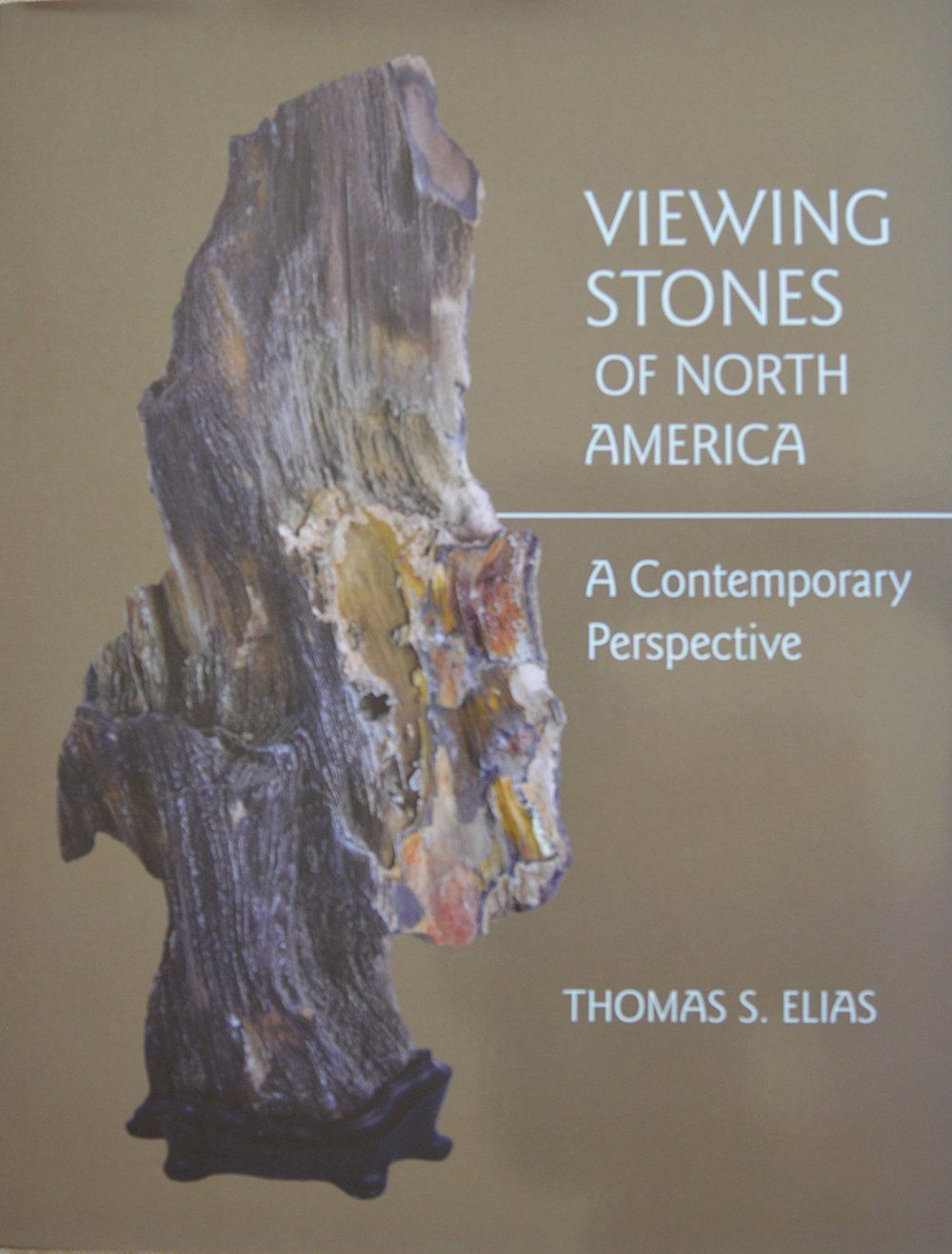ENGLISH BOOK REVIEWS
Flatiron Books, New York. 306 pages, ISBN: 9781250875891.
Once you begin reading this book, it’s hard to stop. I was quickly drawn into the pages which are clear and informative, revealing the the author’s personal experiences as a student and then as a professor of geology and environmental science. Bjornerud has mastered the art of popular science writing in which the complex and technical aspects of science are translated into a language that most non-scientists can comprehend. This is a rare talent.
This is not a book about displaying unusual rocks in the Chinese, Japanese, or Korean traditions. There are no beautiful photographs of a tokonoma-like setting with aesthetically pleasing rocks and accompanying objects displayed. Instead, this volume takes readers back a giant step that predates the Asian art of viewing stone appreciation. She selects ten rock types, each from a different setting, and with great clarity brings each stone to life. Readers learn early in Turning to Stone that the Earth has been reinventing itself for over four billion years. Each rock has a story to tell about its origin and travels on our planet. Bjornerud instructs us that rocks are not found in the habitats where they were formed. On nearly every page I learned something new about rocks.
Basalt, a familiar rock to viewing stone collectors, is the focus of chapter two. The author uses the extensive basalt flows under and north of Lake Superior to enlighten readers about the many varieties of basalt. Her marvelous storytelling abilities give readers a much better understanding of this igneous rock type. It’s not just a smooth, hard black rock as many viewing stone collectors believe.
It was reassuring for me to learn that Bjornerud considers rocks to be “raconteurs, companions, mentors, oracles, and sources of existential reassurance.” The literati in dynastic China realized this as did the scholars in Korea and Japan. I can openly admit to writing a series of short conversations with stones. As a scientist, I readily agree with the author when she writes “The deepest truths are found in nature, not in human traditions”.
DK Publishing Co., New York. 360 pages, ISBN 978-0-7566-3342-4. Price when published $26.99.
This generously and beautifully illustrated book is a valuable reference for people who collect and appreciate stones for their aesthetic qualities. People new to viewing stones and suiseki and lacking a background in geology are confronted with an array of barriers when trying to understand what type of rocks they should collect. How are rocks formed? Where do they occur? How can they tell the difference between one rock or mineral and another? Having a basic understanding of rocks and minerals is important to developing a complete understanding of the different facets of stone appreciation.
Starting with the formation of the Earth and then describing the different major groups and types of rocks and minerals, Rock and Gem conclude with a short chapter on fossils. The section on igneous, sedimentary, and metamorphic rocks is illuminating. Learning about clastic rocks and the difference between nodules and concretions adds depth and is important to rock collectors. Knowing the difference between gabbro, serpentinite, and basaltic rocks is essential to being an informed collector.
While the Internet is filled with information about rocks and gems, it is unfiltered information. That is, this information has not been vetted by knowledgeable experts. Some online materials are excellent, others are mixed, and some information is not correct. Sorting through all of this is time-consuming and challenging. However, this book, a product of the famed Smithsonian Institution in Washington, D.C., has reliable information that is presented in clear, non-technical language. I trust the information in this volume more than most of the online sources.
Having a basic knowledge of geology is not a requirement to appreciating the aesthetic features of rocks and minerals. However, a deeper understanding of the objects you are viewing is crucial to becoming a true viewing stone connoisseur. The quote
“A little learning is a dangerous thing. Drink deep or taste not the Pierian Spring” by Alexander Pope is apropos to stone appreciation.
J Young Art, New York. 42 pp. ISBN: 978-0-6154391-8-1. No price given.
This is an exhibition catalog to accompany the display of a selection of Kemin Hu’s scholar rocks, Hai Tao’s paintings of mountains, and three ink paintings by C.C. Wang that was held at the Sidney Mishkin Gallery at Baruch College in The City University of New York. The exhibit was held from February 25 through April 6, 2011. Two introductory articles, one by the editor on Chinese rock culture and a second short background article on the Chinese artist Hai Tao. Seventeen stones from Kemin Hu’s collection are beautifully illustrated in this catalog. This includes several Lingbi, a Taihu, Ying, Mohu, and other stones, mostly ones that were appreciated during the dynastic periods in China.
This importance of this booklet is to document a fine exhibition of Chinese stones and art.
Charles E. Tuttle Company. Inc. 166 pages. ISBN 0-8048 1485-6.
The combined efforts of an American scholar and a Japanese leading expert on bonsai resulted in the first English language to the Japanese art of stone appreciation (suiseki) and the combined use of bonsai and stones together. Covello and Yoshimura’s book quickly became the leading reference for people outside of Japan to learn about this subject, and has even been translated into other languages.
Six chapters and two appendices comprise this volume. It begins with a discussion of the historical background before shifting into the characteristics and aesthetic qualities of selected stones. The authors devoted considerable portion of this book to classification systems in the third and longest chapter. Their classification of stones by their shape was adopted by most stone collectors in non-Asian countries. How to display stones is the subject of the fourth chapter. The fifth chapter treats the subject of combining stones with bonsai, mainly in tray landscape arrangement. The concluding chapter focuses on collecting susieki.
This is an excellent introduction to Japanese stone appreciation, although it perpetuates the false assumption that all suiseki are products of natural forces. Enhancing stones and manufacturing suiseki was in full swing in the 1970s and 1980 in Japan.
The Chinese Porcelain Company. New York, NY. 27 pp. No ISBN number. No price given.
This attractive publication is an exhibition and sales catalog of tree and rock painting by the artists Lu Dan and Zeng Xiaojun. Both are highly acclaimed artists for their works—Lu Dan for stones and Zeng Xiaojun mainly for trees. The pen and ink drawings of both are superb and their intricate detailed drawings are highly sought after by collectors.
The photographic reproduction of their works by Richard Goodbody is printed one per full so viewers can see every detail of the works of these artists. A short two-page introduction by Robert Mowry adds to value of this work. Brief information about both artists and their previous exhibitions are included at the end.
Edge, Sam & Janet Roth 2020
The Suiseki Art of Mas Nakajima
Rating: Highly recommended, a fine example of how a Japanese American has mastered the art of Japanese suiseki, but is overpriced for the quality of production.
Self-Published, Blurb. 101 pages, no ISBN. $156.87 when published.
This book is a fitting tribute to the late Mas Nakajima, teacher, artist, and connoisseur of traditional Japanese style suiseki, by his wife and friends. Nakajima was born and raised in Gifu, Japan, and came to San Francisco to continue his education. Although he received a degree in Fine Arts, he opened a construction company and pursued a successful business in home construction and general contracting. He pursued his interest in painting and searching for suitable Japanese-style stones in central and northern California during this time. He was an extremely talented artist and craftsman who shared his knowledge with individuals in his suiseki club. During this time, he assembled an extensive collection of stones and made bases (daiza) for them.
Makajima collected and brought many stones back to his home in his early days of stone hunting, then became more selective as he honed his knowledge and understanding of Japanese suiseki. He believed that a stone can be cut, but only if it improved the stone and the resulting piece met the standards for a good Japanese suiseki. For more information about his philosophy and practices, see his website https://suisekiart.com.
Nakajima’s bases are genuinely extraordinary for their quality and adherence to the guidelines for Japanese daiza. His skillfully carved bases match the form of the stones. Together, the stone and base join to make a seamless art object as seen in his Eel River “Peace” stone or his Gill Creek “Grand Teton”. This illustrates the meticulous care Nakajima used in his base-making techniques. Mas Nakajima was one of the best daiza carvers in North America due to his woodworking skills and attention to how the base fit the contours of the stone. He used black walnut wood for most of his bases and mahogany when it was available.
The quality of the photography matches the excellent quality of the stones. Sam Edge’s mastery of sharp focus, depth of field, lighting, and accurate color reproduction is enviable. Edge’s photographs, like the stones, serve as models for others to emulate.
An additional seven pages of displays that Nakajima staged at Bay island Bonsai exhibits give a glimpse of his painting style and his choice of objects he used in each display. The use of a horizontally oriented oil painting replaces the traditional hanging scroll. This deviation is a welcome addition. Personal comments and reflections from five family and friends express the many attributes of the quiet man who truly understood the meaning of Japanese suiseki.
Students of stone appreciation can expand their knowledge by studying the examples in this book to learn about traditional Japanese suiseki. Note that this is an expensive volume which may be out of reach for most stone collectors. This is unfortunate as I would use many of Nakajima’s stones and bases to illustrate what collectors should strive to reach the apex of Japanese suiseki practices. An affordable electronic version of this book would be desirable.
Edge, Samuel, 2025
Suiseki Stories
Rating: Excellent, a valuable contribution the understanding of western viewing stone appreciation. Susieki Stories is available in electronic and in hard cover print forms.
Privately published with LuLu Press, Inc. 190 pages, ISBN:978-1-300-16072-4.
This self-published book is unlike most other volumes published on stone appreciation in recent years. It is not an exhibition catalog, nor a compilation of photographs of stones. Suiseki Stories represents a new chapter in the short history in North America and Europe of admiring and cherishing stones solely for their aesthetic qualities and abilities to suggest something greater than just a rock. It is a volume of seventy stories about stones, primarily from the USA and Japan, from 26 collectors. Some of the featured rocks are well known to experienced collectors, and have been previously published and exhibited.
The stories, sometimes detailed, tell how the stones were acquired, former owners, what the collector sees in each stone, and what the stones means to them. This volume is strongly influenced by Japanese suiseki practices. For decades, western stone collectors have tired to interpret and reinterpret what leading Japanese suiseki connoisseurs and dealers had written or spoken about Japanese stones. Some western collectors became so focused on trying to fit every stone neatly into one of the artificial categories used to classify stones that they lost sight of the more important aspects of stone appreciation. That is, the viewing experience, the feeling a stone generates in a viewer’s mind, how a stone is linked to past literature or famous collectors, and learning how to display stones to maximize that experience are more important than classification schemes. The story about how a special rock was acquired, the history of a stone that has passed from one collector to another and its record of being exhibited or featured in a book adds immense meaning. That is the value of Suiseki Stores. It is a sign of the level of the increasing maturation among North America and European stone collectors.
In many ways, this book is a fitting tribute to the late Mas Nakajima, Sam Edge’s mentor. The leading story about a stone “Tea Bowl” is touching. Other contributors in this volume also reference Nakajima. Daniela Schifano’s stone “Red Cliff,” and how it evokes feelings that tie it to a famous Chinese poet is a good example of how a stone can be interpreted. Some of the stone stories are more personal than others such as Jim Greaves’ “Alice Stone.” But all of stories show how serious collectors came to love and appreciate their prized rocks. This is true for included stones that have been bottom cut or worked to appear natural.
Elias, Thomas S, Lianju Li and Christopher Y Fan 2018
Viewing Stone Arts of Yunnan
Emerson-Dell, K. Ed. 2022
Cultivated Stones
Chinese Scholars’ Rocks from The Kemin Hu Collection
The U.S. National Arboretum. National Bonsai Foundation, Washington, D.C. 145 pages. ISBN: 979-8-218-02080-4.
This is a significant publication, perhaps the most important book on Chinese Scholars’ rocks published in 2022. It is more than just a documentation of the gift of 112 Chinese stones presented to the U.S. National Arboretum (USNA) in Washington, D.C. by Kemin Hu. Hu is a well-known stone collector, dealer, and author of several books about classical and modern Chinese viewing stones. Last year, Hu decided to present many of her stones along with 17 stones that were originally in her father’s collection in an eventual effort to establish a Chinese Scholars’ Rock museum within the National Bonsai and Penjing Museum at the USNA.
Several features in this book combine to make it an outstanding volume. First and foremost is the catalog section that divides the 112 stones into nine sections. Stones with shared characteristics are grouped in each group. This is an immense aid to readers. It can be difficult for people to experience difficulty in understanding the breadth of stone appreciation in China, with more than 600 different types of viewing stones recognized by the View Stone Association of China. However, Kathleen Emerson-Dell’s grouping of the Hu donation into nine sections is a good educational aid. The first section, Honorable stones, features 17 stones from Hu Zhaokang, Kemin’s father. A second section, Distance Mountains, brings together those stones reminiscent of faraway mountains. Narrow, vertically oriented stones are brought together in the Towering Peaks section; while colorful stones are assembled into another section Stones of Color. A small section is devoted to fossils that have long been a part of Chinese stone appreciation practices for many centuries.
It is nice to see that enhanced stones, which have been carved, shaped, and polished, are recognized along with the natural stones that have only been cleaned in preparation for display. Enhancing stones has been integral to Chinese stone appreciation from ancient times to the present. Not all students of Chinese stone will agree with the statement that carved stones are differentiated from natural stones by adding the Chinese term ling long. The Chinese words, ling long, have long been used for delicate or graceful stones, especially with rocks that possess many holes. This term has been applied to completely natural stones and to enhanced stones. Scholars have shown that the ling long has different meanings over time.
The carefully researched article about the appeal of Chinese Scholars’ Rocks by Phillip Bloom is an important scholarly contribution to understanding the complex nature of Asian stone from ancient to modern times. He succeeds in dissecting and explaining the appeal of scholars’ rocks. It appears that Bloome may represent the next generation of scholarship on Chinese viewing stones by adding to the immense contributions of the earlier generation of scholars—Hay, Mowery, Stuart & Little.
Cultivated Stones is a beautifully designed volume with a sharp layout and stunning and evocative photographs of the one-hundred-plus stones Illustrated. It is a quality publication from all aspects of production—paper quality, binding, and binding.
Rating: Excellent; a must-have volume for all students of Chinese stone appreciation.
Flacks, Marcus 2012
Contemplating Rocks. Sylph Editions
Frankel, E & J 1995
The C.C. Wang Family Collection of Fantastic Stones. Exhibit and Sales Catalog
Gerstle, Manette 2006
Beyond Suiseki, Ancient Asian Viewing Stones of the 21st Century
Greaves, J L 2008
American Viewing Stones, Beyond the Black Mountain: Color, pattern, and Form
Gupit, F S 2004
The Bonsai & Suiseki Collection of Felicidad Sanchez-Gupit
Gupit, Y 2013
The Wonders of Natural Stones. The Philippine Collection
Hardie, Alison & Duncan M. Cambell Eds. 2020
The Dumbarton Oaks Anthology of Chinese Garden Literature
Rating: Excellent, an important reference for serious students, scholars, and connoisseurs of Chinese stone appreciation.
Dumbarton Oaks Research Library and Collection, Washington, D.C. 750 pages, ISBN: 978-0-88402-465-1. Price: $70.
On rare occasions, a scholarly work appears that rises far above the many articles published and the verbiage posted on the Internet about Chinese viewing stones. This book is one of those rare works. Many scholars of Chinese literature contributed to this volume. Even though the majority of this massive tome is devoted to garden literature, chapter 3, Rocks and Flora, and selected pieces in chapter 7 do focus on unusual rocks appreciated for their aesthetic qualities.
In 2013, Dumbarton Oaks, a research facility of Harvard University, began a project to translate rare and classic Chinese text on Chinese garden history and related topics into English. This is one of those translations. It covers over 1200 years of Chinese history that ends with the Qing dynasty. One chapter alone contains 18 passages about rocks, including two very important works of Bai Juyi —"A Pair of Rocks" and "An Account of Lake Tai Rocks"—which helped to establish the aesthetic parameters for appreciating fantastic rocks in China. Important works of Niu Sengru, Du Wan, Su Shi, Mei Yaochen, Lin Youlin, and others are also included.
A translation of the introduction of The Stone Compendium of the Plain Garden (1613) by Lin Youlin is provided by Stephen Little. As I read this passage, I could not help but yearn for a complete translation of this important four-volume illustrated work on Chinese stones appreciated solely for their aesthetic qualities. What an important contribution this would be.
A favorite story of mine is The Etherial Rock by Qing dynasty writer Pu Songling. It is a wonderful story about the relationship of a rock and a man that should be required reading for aspiring stone connoisseurs. A translation of this work was first published in Strange Tales from Make-Do Studio (1989). Several of the articles about stones have been previously published in hard-to-find works. Thanks to Hardie and Campbell, many of the important translations have been brought together in The Dumbarton Oaks Anthology of Chinese Garden Literature.
Even though the majority of Chinese literature relating to stone appreciation has yet to be translated, this book is an important contribution to the growing body of works about Chinese scholar rocks.
Harris, P. R. Turner, & A.J. Nocek. Eds. 2018.
Rock Records. In: Substance,
A Review of Theory and Literary Criticism. Issue 146. Vol. 47
Rating: Very Good
Johns Hopkins University. ISSN:0049-2426;
E-ISSN 1527-2095. 199 pages.
Rock Records is a collection of twelve wide-ranging scholarly essays that explore the relationship between people and the lithic world. This issue of the journal Substance, A Review of Theory and Literature Criticism, published three times a year by Johns Hopkins University, includes discussions of the role of stones in art and the aesthetics of viewing stones.
Most viewing stone collectors will be interested in Richard Turner's "ReGrounding: The Arts and Practice of Viewing Stone Display" and Paul H. Harris's "Stone Thinking: The Petraverse of Pierre Jardin." For those seeking broader information about our relationships with rocks, I recommend Nigel Clark’s paper "Bare Life on Molten Rock" and A.J. Nocek’s thought-provoking “Geology, Myth, Media." They helped me to expand my understanding of rocks.
This book is primarily for scholars and serious collectors who wish to expand their knowledge of rocks. Supplemental information to
Rock Records is provided in the electronic version of the issue at:
https://substancejournal.sites.lmu.edu/home/supplements/rock-records
Hay, John 1985
Kernals of Energy, Bones of Earth, The Rock in Chinese Art
Hay, Jonathan 2010
Sensuous Surfaces, The Decorative Object in Early Modern China
Rating: Excellent, an important work for all serious students of the dynastic period in Chinese culture.
University of Hawai’I Press, Honolulu. 440 pages. ISBN: 978-0-8248-3361-9.
Sensuous Surfaces is a fresh new look at the decorative arts in early modern China by noted art historian Jonathan Hay. Hay starts this literary journey by considering the features of decoration as one of the most pervasive presences of art in the lives of people. He examined the transition period between the Ming and Qing dynasties as his boundaries. This was a time of prosperity in China when the arts flourished and the wealthy were seeking luxury items for their homes. Viewing stones were one of the numerous items including furniture, ceramics, wood and stone carvings, and paintings identified as decorative objects. Hay makes a compelling case for the pleasure that people derived from these items or, more precisely, the surfacescapes of these pieces. He humorously notes that “Art history as an academic discipline discourages the discussion of pleasure.” Hay presents his arguments for taking pleasure directly or metaphorically in sensuous surfaces in three major divisions: The Decorative Features, The Surfacescape’s Resources, and From Surfacescapes to Objectscapes. He maintains that luxury items were an important part of the culture of China. They function to connect us visually and physically to the world around us. Hay maintains that pleasure derived from decorative items plays an important role in aesthetic practices.
This is not a book on viewing stones. Instead, these stones are part of a larger body of decorative items used in the late Ming and early Qing dynasties in China.
Hu, Kemin 2006
Modern Chinese Scholars’ Rocks
Hu, Kemin 1998
The Spirit of Gongshi: Chinese Scholar’s Rocks. L.H. Inc and Art
Hu, Kemin 2002
Scholar’s Rocks in Ancient China
Hu, Kemin 2011
The Romance of Scholars’ Stones. Adventures in Appreciation
Hutchinson, Bill & Julie 1976
Suiseki in British Columbia
Jadlhav, Sudhir & V. Suryakumar. 2022
The Art of Viewing Stone Appreciation
Rating: Very good, a good guide for others to learn about a large and important private collection.
Avadlhoota Datta Peetham, Raga Ragini Trust. Mysuru, India. 112 pages, no ISBN.
This volume was published to commemorate the 80th birthday of Sri Ganapathy Sachchidananda Swamiji, and in conjunction with the Shila Khand Suiseki Convention held on June 4th and 5th and sponsored by the South Asian Bonsai Federation. The stones illustrated in Shilakhand belong to the SGS Vishwam Museum in Mysuru.
There is a growing interest in viewing stones in India, especially among many enthusiasts of bonsai art. Certain stones have been revered and even worshiped as part of religious practices in India for centuries. However, the appreciation of stones solely for their aesthetic qualities is relatively new. Those eager to learn about the practice have looked at the traditions in China and Japan. This volume contains viewing stones from India, China, Japan, as well as other countries. Many quality fossils and mineral specimens are included, along with several excellent natural native stones. One example is a limestone rock that resembles the elephant god Ganesh and is displayed in a carved wood base that resembles an altar. This is a fine example of how viewing stone appreciation in India is adapting to this country's long and rich cultural history.
The photographs are sharp and allow viewers to see the detail in each specimen. The text is clear and easy to read. I wish more information (country of origin and size) had been included. This book may motivate Indian stone collectors to join together to publish a volume solely on the beautiful native stones of India.
Juniper, Andrew 2003
Wabi Sabi, The Japanese Art of Impermanence
Katayama, Ichiu 2018
Katayama School of Keido, The Original School of Japanese Traditional Display Arrangement
Kate, Jones and Brian Harkins 1996
Treasures From Nature.
A Selling Exhibition
Kelley, J 2004
Rocks Into Gold.
Zhan Wang: Sculptures from the Sierra
Klauber, R 2016
PSBA Viewing Stone Study Group Exhibition at the Pacific Bonsai Museum March 26-April 24, 2016
Lei, Jiang 2000
On the Origin and Rise of Rock Appreciation
Li, Ming 2000
China’s Rare Stones in New Century
Little, Stephen 1999, Spirit Stones of China
The Ian and Susan Wilson Collection of Chinese Stones, Paintings, and Related Scholars’ Objects
McWilliams, G. 2019
The Anchor and The Pick
Rating:
Excellent. This is a valuable reference to the mineral and rocks of extreme southeastern Alaska and the collecting sites for these geological specimens.
182 pages, ISBN 13: 978-0-9961032-8-2. Great Story Book Publishing Company, Bellingham, Washington.
This delightful volume is an essential reference for rock or mineral collectors interested in the Pacific Northwest region of North America. The author spent twenty years plying the waterways of the Inland Passage stretching from Washington state to southeastern Alaska in search of minerals rocks and viewing stones. This book describes more than 150 collecting locations in the region, including many small islands. McWilliams is a mineral collector who picked up many beautiful stones he referred to as “natural sculpture” before he learned about viewing stones and suiseki.
The Anchor and The Pick can guide a collector to known sites that have yielded attractive viewing stones. Caution: it won’t be easy to get to many of these sites without a boat.
Melendez, H. M. 2024.
Caribbean Suiseki Gallery
Rating: Fair, due to the quality of the printing and text.
Privately Published. 125 pages. ISBN: 979-8398366600.
This volume features the stones collected by the author over many years on the island of Puerto Rico in the Caribbean. It is a welcomed addition because it is the first book devoted solely to viewing stones in this part of the world. Caribbean Suiseki Gallery is also clear evidence that quality Japanese Suiseki-type stones can be found on an American tropical island. I was impressed with the quality of many of the Japanese Suiseki-type stones on this American tropical island. Caribbean Suiseki Gallery can serve as a valuable guide to stone collectors throughout the Caribbean.
The photographs lack good contrast and appear washed out. Gloss or semi-gloss paper would help make a stronger artistic statement. An editor or copy editor would have caught the numerous grammatical errors in the text.
Moss, Paul & Brian Harkins 1995
When Men and Mountains Meet, Chinese and Japanese Spirit Rocks
Mowry, Robert 1997
Worlds Within Worlds.The Richard Rosenblum Collection of Scholar’s Rocks
Notter, P 1999
Suiseki, The Best of Europe
Oldershaw, C. 2023
Stones, A Material and Cultural History
Rating: This is an excellent book for broadening one’s knowledge of the cultural uses of stones, primarily in Europe. If you are expecting to learn more about the cultural history of Chinese, Korean, and Japanese viewing stone appreciation, this book is not for you.
Reaktion Books, London, UK. ISBN: 1-78914-771-1. 295 pages
A fact-filled volume presented in easy-to-read prose that covers a wide range of information related to the cultural history of including stones in people’s lives. I eagerly purchased this book when I first learned of its existence in hopes of broadening my knowledge of how stones have been used and in what capacity. As I poured through the five chapters and appendix, I came to the conclusion that it is a largely Eurocentric tome centered on the United Kingdom. Because of this, I learned about staddle, Waun Maun, standing stones, and other stones.
Her opening chapter, Geology and the Science of Stones, focuses on the geology of the UK. I learned about staddle stone and the use of slate in buildings. From there, she dives into an informative chapter covering megaliths, burials, quartz, and other significant and sacred stones. I didn’t realize that there are so many megalithic sites in the UK and elsewhere. The Black Stone of Mecca was new information, and the pages devoted to inscribed and engraved stones were enlightening. Her third chapter, Stones and the Creative Mind, covers a wide range of topics, from natural stone pigments and cave art to the Earth Art movement in the 1960s, including stone balancing and stacking. A chapter on medicinal, health, and healing stones covers a wide range of topics. I didn’t realize how fossil ammonites, crinoid stems, and other mineralized organisms were used as sacred symbols and used as healing stones. Even stones used in Chinese medicine and massage therapy are covered, as are stones used in Zen gardens. Several interesting pages are devoted to gastroliths and uroliths, subjects not high on my priority list. The final chapter on collectors, collections, and collecting stones focuses primarily on gem and mineral specimens. It briefly mentions Mi Fu (spelled Mi Fou in this book), the famous Chinese calligrapher, bureaucrat, and advocate of appreciating stones for their aesthetic value. It also briefly mentions ruin marble as a landscape scene marble from Florence, Italy, but fails to mention the world-famous Dali marble that has been admired for centuries.
I enjoyed this book and learned from it. However, I was disappointed that the author largely ignored the importance of certain unusual stones in Chinese, Korean, and Japanese cultures. A discussion of the collection and display of provocative stones in poems, prose, and paintings would have been welcomed. The literature is replete with excellent examples of how selected stones were brought into homes and admired for their features. I couldn’t find any mention or discussion of Chinese scholars’ stone, Korean Suseok, or Japanese suiseki in this book. An added chapter on this would have made a good book even better.
Ponnuswami, M 2012
Suiseki, The Art of Viewing Stone
Prudence, P. 2022
Figured Stones, Exploring the Lithic Imaginary
Rating: Excellent: a unique contribution to the philosophy of viewing stone appreciation
Xylem Press. 106 pages. ISBN: 978-9163935-7-8.
By Paul H. Harris
This unique book could be described as a philosophical journal of writings and drawings inspired by Chinese scholars’ rocks and stone appreciation. In the spirit of a contemporary literati contemplating viewing stones, Prudence writes short rock-meditations on a wide range of themes, including geologic time, dreams, mortality, and spirituality. In the tribute to classical Chinese texts, a section of the book called “The Stone Catalog of The Transfixed Gaze” features brief chapters on types of stones (“Cloudstones,” “Mapstones,” “Cavernstones”). Instead of defining each type, Prudence interprets them, expressing the meanings and associations he discovers in them. Sometimes his meditations on stones are illustrated with meticulous line drawings of their form and textures. Like Chinese ink paintings, the drawings may be seen as attempts to capture not only the appearance but also the energy and forces that flow through the rocks.
The author is a well-regarded writer, artist, scholar, and musician. His dense style, original thinking, and advanced vocabulary make the book both a pleasure and a challenge to read. It explains Taoist concepts and compares them to sources in western philosophy, art, and literature, including Max Ernst’s surrealist paintings, Carl Jung’s psychology of dreams, and a mystical novel by Gustave Flaubert.
Prudence explores ideas and experiences common to many people who have a deep appreciation of viewing stones and develop strong connections to them, such as the sense that stones are alive or exude a spirit or energy. His text is particularly exciting because he expresses and extrapolates such ideas to their furthest extent. Prudence describes his work as a “visionary geology,” in which viewing stone appreciation is a profound meditative practice: “Rock reverence invokes a dialogue with our spirit-self and brings to us a precious rendezvous with our own inner voices.” Within his hylozoic philosophy (the idea that all matter is alive), “the interanimating spirit of mind and matter” enables viewing stone contemplation to “open a two-way transmission line so that geology can send messages to us in stone.” He imagines the forms and textures of stones literally imprinting themselves in our brains: "The messages are mineralized into minds and in the marble patterns of neural pathways".
This book will offer stimulating reading to anyone with a philosophical interest in viewing stones. It opens up new ways of thinking about viewing stones, geology, and our relationship with nature. It may be read most profitably in small doses—each of its short chapters might suggest new approaches to viewing stone appreciation and practice.
Reichhold, J 2019
Naked Rock
Rosenblum, Richard 2001
Art of The Natural World
Schafer, EH 2005
Tu Wan’s Stone Catalogue of Cloudy Forest. Floating Worlds Editions
Schneible, D 2011
Dreaming of Dreamstones, China’s Extraordinary Natural Stone Paintings
Scogin, H T 2002
Rocks and Art: Nature Found and Made
Scogin, Hugh T 2009
Art and Rocks: Nature Found and Made
Singer, J, Kemin, Hu and Thomas S Elias, 2014
Spirit Stones, The Ancient Art of the Scholar’s Rock
Siren, Osvald 1949
Gardens of China
Stein, Rolf A 1990
The World in Miniature: Container Gardens and Dwellings in Far Eastern Religious Thought
The National Bonsai Foundation
Awakening The Soul
Tucker, M 1996
Suiseki & Viewing Stones, An American Perspective
Horizons West, Flagstaff, Arizona. 40 pp. ISBN: 0-9634423-2-5.
This modest volume is the first book to focus mainly on beautiful stones collected in desert areas of the American Southwest. Melba Tucker and some of her friends were among the first to search for unusual stones in the Mojave Desert and other desert regions long before the area was closed to collecting. The stones illustrated here are from her personal private collection. Even though she basically followed the principles given in Covello and Yoshimura book on Japanese stone appreciation, Melba realized that her desert stones didn’t fit into traditional Japanese categories of stones. She added “an American Perspective” to reflect the need to enjoy this art form in the American way.
Many of the stones featured are small desert ventifacts formed by sand laden winds over time. The stones are hard due to the high level of silica dioxides. After her death, Melba’s stones were dispersed to friends and former students; although two of the finest examples—“Geisha Girl” and “Waterfall Stone” were donated to the National Bonsai and Penjing Museum were they can be seen in the Melba L. Tucker Suiseki Display area. Her small figure and pattern stones are especially nice.
Turner, Richard, Thomas S. Elias & Paul A, Harris, 2020
Contemporary Viewing Stone Display
Viewing Stone Association of North America, Claremont, California. 204 pp. ISBN: 978-0-578-67524-4.
Review by Tatehata Kengo, Chief Editor, Aiseki Magazine, Japan
I am impressed by the new ways of displaying stones illustrated in this book Contemporary Viewing Stone Display, even though my English is not good enough to read through all the contents in a limited time. I can surely recommend this book to all the stone hobbyists in the world. The stone displays in chapters 4 and 5 are all strikingly fresh and new, departing from Japanese suiseki displays. The book is insightful and inspirational for those who love stones, including all the readers of Aiseki magazine. I find the book very interesting in presenting a new future direction of suiseki and viewing stones. Contemporary Viewing Stone Display book was published in the USA in July 2020. Three authors such as Tom Elias, well-known stone connoisseur even in Japan, as well as Richard Turner and Paul Harris, cooperatively prepared the book. Each author presents his interpretation of stones in the book. Additionally, the book presents the history of Japanese suiseki and Chinese viewing stones. Yet the focus is obviously on contemporary stone displays deriving from the tradition and history.
My first impression is the cover photo of the Georgian Bay stone. This stone is too white and too soft by the Japanese suiseki standards. Yet the base is interesting enough for the Japanese to learn from it. I have been serving as a chief-editor of Aiseki magazine for 16 years, and I have had opportunities to visit US stone hobbyists. I realized that majority of US stone hobbyists had been working to understand and get closer to the Japanese suiseki. As a Japanese magazine editor, I was pleased with their attitudes since the Japanese suiseki should be fundamental. However, when I think of the future of suiseki and viewing stones, I find a good possibility in the future of stone appreciation that is different from the status quo illustrated in this book. Suiseki hobby is declining in Japan. The Japanese tend to take much time to get out of old ways. Taking time for change is sometimes good, but other times it is not good since our world is changing rapidly. It is indeed vital to appreciate the tradition, but the Japanese suiseki needs to find new and different ways to accommodate the current society. Recently some young Japanese ladies in their twenties began to be interested in stone appreciation. It is essential to show them new ways of enjoying stone appreciation. These trials or experiments in the book will lead to an increase in the suiseki and viewing stone people. I hope this will also increase the subscribers of my magazine.
Wang, Z 2011
The New Suyuan Stone Catalogue
Yang Xiaoshan, 2003
Metamorphosis of the Private Sphere. Gardens and Objects in Tang-Song Poetry
Harvard East Asian Monographs 225. Harvard University Asia Center, Cambridge, Massachusetts. 301 pp. ISBN: 0-674-01219-4. $45 when published.
This scholarly treatise is not for the casual stone hobbyists. Instead it is an important contribution for serious collectors and scholars of Chinese stone appreciation. Mountains and stones were revered in ancient China and played a critically important role in the lives of painters, posts, writers, and learned officials. Individual stones and artificial mountains made of stones were a conspicuous element in Chinese gardens. The author of this volume carefully documents how gardens and garden objects were incorporated in some of the more important works of poetry in the Tan and Song dynasties. Chapter three, Fetishism and Its Anxiety: A Poetic Biography of Fantastic Rocks, is the most important chapter of this book for pterophiles. The appreciation of stones and their incorporation in gardens expanded greatly during the late Tang dynasty. Yang provides numerous examples of the way poets described in their work different types of stones, especially one from Lake Tai. He shows how the leading poets of that time wrote about these stones,and were also avid collectors of stones. Yang compares and contrasts the poets and their views in this valuable reference. Readers will begin to understand the importance of fantastic stones in Chinese society and in the lives of the literati after carefully studying this book.
Zeami, 2006
The Flowering Spirit. Classic Teachings on the Art of Noh
Rating: Excellent, for serious students of the Noh plays and for those interested in the development of the aesthetic concepts that are currently applied to Japanese suiseki.
Translated into English by William Scott Wilson. Kodansha International. Tokyo. 183 pages. ISBN: 13:978-4-7700-2499-2 and 10:4-7700-2499-1. Price when published $19.95.
First, this is not a book about Japanese Suiseki or the broader category of Viewing Stones.
The Flowering Spirit is valuable to understand some aspects of the Japanese aesthetics and spiritual culture.
The Flowering Spirit or
Fushikaden is a treatise on drama as expressed in the Japanese Noh plays written by Zaemi Motokiyo in the early half of the Muromachi era between 1394 and 1428. This treatise was not published nor made available to the public. It was kept as a secret document that was carefully passed from one generation of Noh leaders to the next generation. Zeami is regarded by most scholars as the founder of the Noh play. He was an accomplished actor who inherited a travelling theatrical troupe when his father died. Most actors in the troupe were poorly educated. Zeami acting skills were greatly appreciated by the Ashikaga Shogun. Zeami was accepted into Ashikaga’s court and provided an education in classical literature and philosophy. Because of this education, Zeami was able to write more meaningful dramas and incorporate Zen Buddhism themes into his plays. Zeami compared a person’s mind to a flower and techniques to a seed. His writings were intended to lead people as an approach to the Way as in Zen Buddhism. This and other private treatises written by Zeami discussed important aspects of character acting, music, and physical movements which are so important in Noh plays. It was not until 1908 that Zeami’s treatises were found and were more widely circulated. A complete set of his treatises was published in 1940, more than five hundred years after they were first drafted. But how does Zeami’s treatises relate to suiseki?
The aesthetic qualities that are applied to Japanese suiseki were adapted from ancient concepts that developed with the formation of Japanese culture ancient times to the present. Some aspects of the accepted sense of beauty arose from calligraphy, the tea ceremony, and from the ancient Noh drama plays. Zeami incorporated the aesthetic concept of Yugen in the Noh plays he wrote. Yugen is a sense of great depth of feeling, the imagination of the latent beauty, something that is suggestive or leave a lingering memory. The ability of a viewer to experience deep feelings of hidden beauty when viewing an exceptional stone comes from concepts expressed in Noh play drama.

